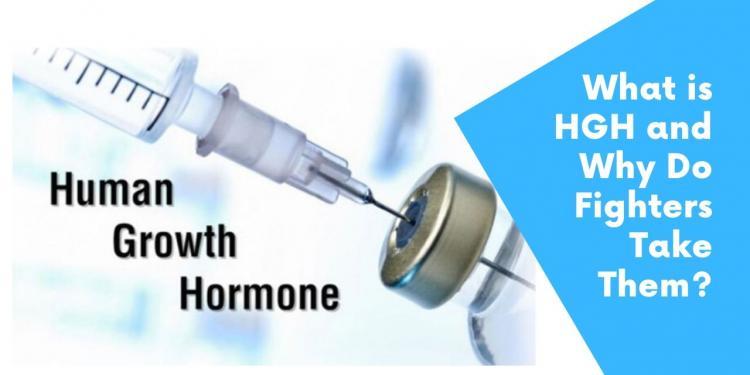The use of HGH is highly controversial in elite organized sports. But what exactly is it? HGH is an acronym for human growth hormone. It is naturally produced by the pituatary gland at the brain’s base. Throughout the life of a person, HGH is responsible for fueling growth and maintaining the body’s organs and tissues. Circulation of the hormone in the body follows the pattern of the pulse and thus, its amount in the blood is affected by factors such as physical activity, age, sleep, gender, stress and the environment. HGH stimulates secretion of Insulin-like Factor-I in the liver. IGF-I is related to the production of cartilage cells that result in bone and organ growth and muscle protein synthesis. When the factors mentioned above begin to slow down the production of HGH, some people resort to the use of synthetic HGH. The users of HGH hope that the hormone will stave off some of the effects of aging such as bone mass and decreased mass.
The molecular serum forms of HGH vary. It exists in forms including 20-kDa and 22-kDa and also in aggregated forms of these isomers. The 22-kDa form has a short half-life of approximately 10-20 minutes once in the bloodstream.
Is HGH a Steroid?
Although HGH it is often mistaken as a steroid, it is actually not. This mix up is largely because it is also categorized as a banned substance in organized sports. Although steroids and HGH are both hormones and share some anabolic properties, they are not the same. So how is human growth hormone and different from (anabolic) steroids?
The difference is in what it is used for in the body. Anabolic steroids promote protein synthesis and it is used to enhance muscle production, improve strength, and stamina. Steroids are synthesized to mostly resemble the hormones testosterone and dihydrotestosterone (DHT).
Human growth hormone on the other hand is a hormone that supports overall growth. When you are young, the hormone is used to facilitate growth from childhood to adulthood—including repairing/replacing cells, growing your bones/muscles and regulating body composition and metabolism. As you grow older, production of the hormone decreases but does not completely stop. And that is why otherwise healthy people supplement with HGH—to keep the body from growing old.

Legitimate Medical Uses of HGH
Human growth hormone can be used legitimately in the case where a person is experiencing growth hormone deficiency. Benign tumors of the pituitary gland are responsible for growth hormone deficiency. Surgery or radiotherapy when treating adenoma may also cause growth hormone deficiency.
Developed in 1981, the synthetic version of growth hormone was approved by FDA for growth hormone deficiency. It was used in the form of injections to treat short stature and poor growth among children. The medical conditions that are treated with human growth hormone in children are:
• Prader-Willi syndrome. This rare genetic disorder causes a feeling of constant hunger, poor muscle tone and low sex hormone levels• Turner’s syndrome. This disorder affects the development of girls• Children born small for gestational age• Chronic kidney disease
In adults, HGH treats the following:
• Pituitary tumors treatment that causes HGH deficiency• Short bowel syndrome• Muscle wasting diseases
Why Is HGH So Popular In Elite Sports?
The effects of HGH include its ability to reduce body fats and to increase muscle strength. HGH can also affect the musculoskeletal system positively by aiding in tissue recovery. It is considered a doping agent and is commonly used alongside other performance-enhancing drugs which make it seem to be having an indirect effect on the performance of athletes.
Some of the athletes who have been caught using human growth hormone include Lance Armstrong and Peyton Manning. Lance Armstrong is especially notorious for using not only human growth hormone but EPO and testosterone as well. The cyclist admitted after years that he did use hormones to boost his performance. Several officials and his teammates testified to being witnesses of him being injected the HGH by Doctor Dr. Luis García del Moral.
Peyton Manning, on the other hand, had a different case where it was alleged that HGH was shipped to his residence. During this time, Manning was suffering from a neck injury that was threatening to his career. An intern at an anti-aging clinic was caught on hidden camera, within the same time-frame, stating that he knew Manning and other athletes used performance enhancers. He was, however, exonerated after seven months of investigation as no clear evidence could point out to the fact that he was indeed using HGH.
Why Do Fighters Take HGH?
Fighters take the human growth hormone because they believe it helps them recover. Training today and being able to train tomorrow is a big motivation for athletes to take on the drug. The HGH is almost always taken alongside another substance.
One fighter that was caught in the web of HGH usage is Chael Sonnen who admitted to using the human growth hormone alongside four banned substances. After failing two drug tests, Sonnen retired from mixed martial arts.
Mirko Filipovic is yet another mixed martial arts fighter with a history of using human growth hormone. He admitted to the use of HGH after his retirement. He said that he mixed the growth hormone with blood plasma to help his shoulder heal faster before the UFC and USADA caught up with him.
Is HGH Use Detectable?
While the body produces various types of growth hormones naturally, they weigh less than HGH that is synthetic. The isoform test is used to detect HGH in the body. It does so by measuring the ratio of synthetically produced HGH to that of those produced by the body. When a player or a fighter is using HGH, the synthetic part of the ratio shoots higher. HGH is not detected through urine test because the hormone’s byproducts are scanty in urine so it can hardly be detectable.
The use of HGH is, therefore, detectable, but as mentioned earlier, it has a short half-life and can only be detected up to 48 hours after use. This makes it hard to detect the use of HGH. Sports leagues, therefore, did random rather than arranged tests for HGH detection as this would help them reduce the chances of not detecting the HGH if the athletes were informed before testing.
There have, however, been improvements in relation to the testing for HGH. The USADA alongside U.K. Anti-Doping were able to develop the biomarker test. This new test s able to detect HGH after up to 21 days rather than 48 hours. It does so by testing the amount of HGH byproducts produced by the body after the intake of HGH. This test is a supplement to the former isoform test. Having earned a strong consensus among experts and doping scientists, the test is the new way through which the users of the HGH will be found out.
The isoform test was first introduced in 2004 to detect any HGH in the body. It differs from the test that has been developed later because the latter tests the chemicals the body produces after the use of HGH.




